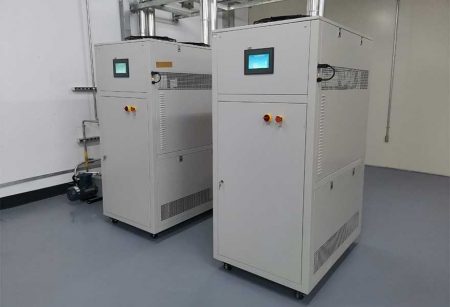Low Temp Glycol Chiller
low temp glycol chiller is an efficient and reliable refrigeration equipment, widely used in chemical industry, medicine, food and other fields. With its high efficiency, energy saving and stable performance characteristics, it has become the first choice for refrigeration equipment in various industries.
The low temp glycol chiller is mainly composed of compressor, condenser, evaporator, throttle valve and other components. Its working principle is to exchange ethylene glycol with air through the evaporator, so that the temperature of ethylene glycol drops, and the cooled air is delivered to the object to be refrigerated. Compared with traditional refrigeration equipment, low temp glycol chiller has higher efficiency, lower noise and more stable performance.

In chemical, pharmaceutical, food and other fields, low temp glycol chiller can be widely used in product refrigeration, processing and storage. It cools water or other liquids to lower temperatures to maintain product freshness and quality. At the same time, in the field of medicine, low temp glycol chiller can be used for the storage and transportation of human and animal tissues, blood and cells. These substances require storage at extremely low temperatures to preserve their activity and integrity.
When using low temp glycol chiller, you need to pay attention to the following points:
First of all, since the low temp glycol chiller needs to be used in conjunction with other equipment, it is necessary to pay attention to the safety and reliability of the equipment. During use, the equipment needs to be regularly maintained and maintained to ensure the normal operation of the equipment.
Secondly, low temp glycol chiller needs to pay attention to energy recovery and utilization during use. Through reasonable design and management, the recovered heat can be reused to improve energy utilization efficiency and reduce energy waste.
Finally, the maintenance and maintenance of low temp glycol chiller is also very important. Regularly maintain and maintain the equipment, check the working status and performance of the equipment, find and solve problems in time, and ensure the normal operation of the equipment.
 LNEYA
LNEYA
 简体中文
简体中文

















































































